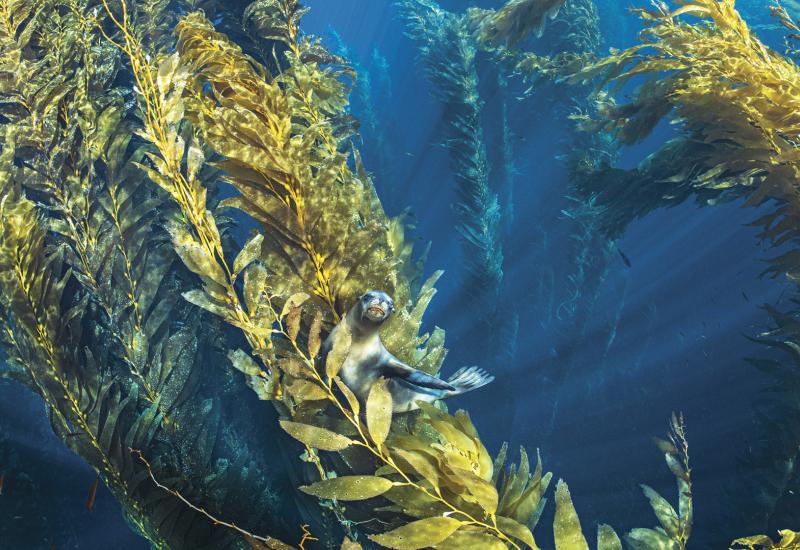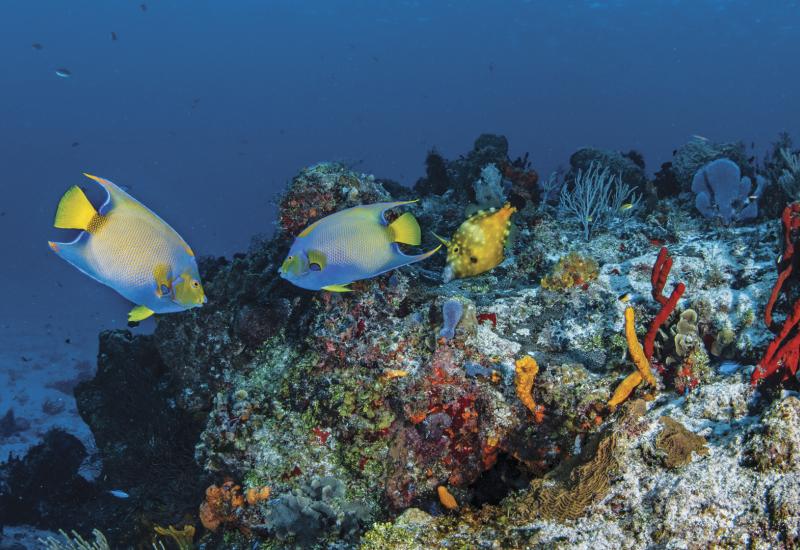Underwater Photography Tips: Getting Silhouettes

California sea lions are one of my favorite marine animals to photograph. I think you would have a hard time finding any other wild animal quite so playful. They have cute faces with lots of personality, but they also create a distinct shape, making them perfect for silhouettes. Most silhouettes are easy to create using just ambient light and no strobes. Even though they can be simple to produce, they can still be some of your most awe-inspiring images in your portfolio.
Location
This image was taken at Los Islotes, a world-famous dive site in La Paz, Mexico. Los Islotes is a small rock island that takes approximately one hour by boat from La Paz. The site features hundreds of frisky sea lions. Both dive and snorkel boats visit the site almost daily, so the sea lions are very accustomed to people. So much so, that I am convinced they believe the people are there for their entertainment. Don't be surprised if you find one using your fin tips as a chew toy. Much of the dive site is in 30 feet of water or less, but it does slope to a approximately 100 feet as you move away from the island. If you ever grow tired of shooting the sea lions, there are giant jaw fish, hieroglyphic hawkfish and even cormorants to keep you occupied. Located near the middle of the island is a small cave that is a favorite hangout for small juveniles. It is only about 20 feet deep and is opened on the surface, so you can snorkel in and out of it. The opening is a great place to capture sea lions entering and the cave itself makes a nice frame for your images.
The Silhouette
There are two main ingredients for ambient-light silhouettes. You need a strong subject with a distinctive shape and you need enough contrast between the subject and the background. Common underwater subjects that make good silhouettes include sea lions, sharks and divers. To achieve enough contrast, keep the sun behind the subject and isolate the subject in open water. Adding additional points of interest, such as sunbeams and framing the subject in a cave opening, can further enhance the image. I prefer to use manual exposure settings when shooting silhouettes. If your subject is filling a large portion of your frame, most auto settings will try and compensate by opening up the exposure and giving you a washed-out silhouette with an overexposed background. To offset this, you can dial in some negative exposure compensation. For this image, I used a Canon EOS 7D with a EF8-15mm f/4L Fisheye lens zoomed to 12mm. ISO was set to 320, 1/250 sec at f/14 and no strobes.
Post Processing
Post on this image was pretty straightforward. In Lightroom, I increased the contrast to give more separation between the sea lion and the background. Next, I added some clarity, which adds some overall sharpening and helps define the light beams. Vibrance was also increased to bring out more of the green and blue hues.
Whether you travel to Los Islotes or another destination, I hope you can use some of these tips to create your own Picture Perfect silhouette.
Todd Winner is a professional underwater photographer, PADI scuba instructor and owner of Post and Beam Media, a boutique post production facility catering to Hollywood's most elite cinematographers. Since taking up underwater photography in 1990, Todd has won over 60 international underwater photo competitions including Best in Show at the 2010 Los Angeles International Underwater Photo Competition. His images have been published in numerous magazines and newspaper articles ranging from Sport Diver to the The Independent and Photography Magazine. His works have been featured in museums and private galleries as well as advertising. Todd currently writes a monthly column for Underwater Photography Guide and leads underwater photo workshops around the world. To view more of his work, visit toddwinner.com.










